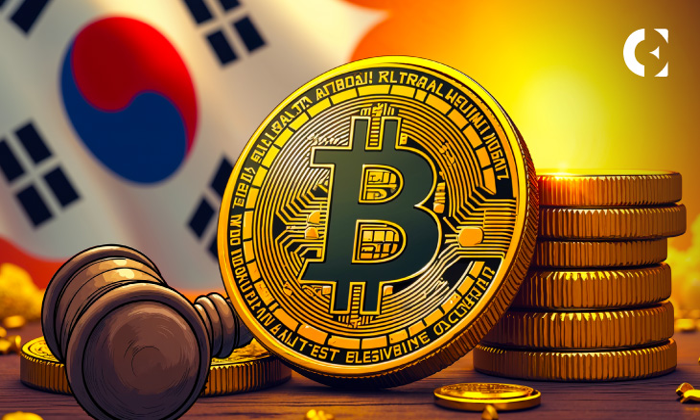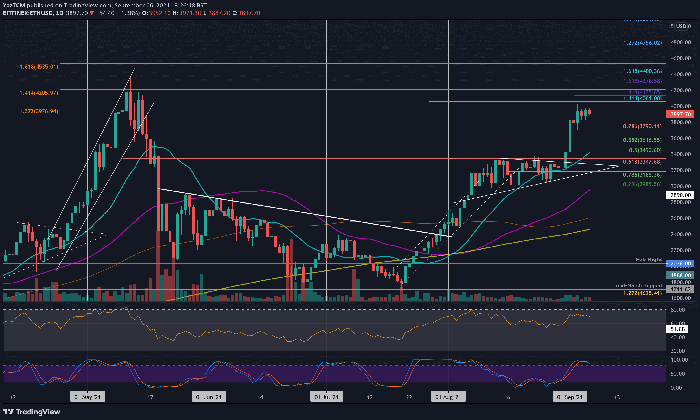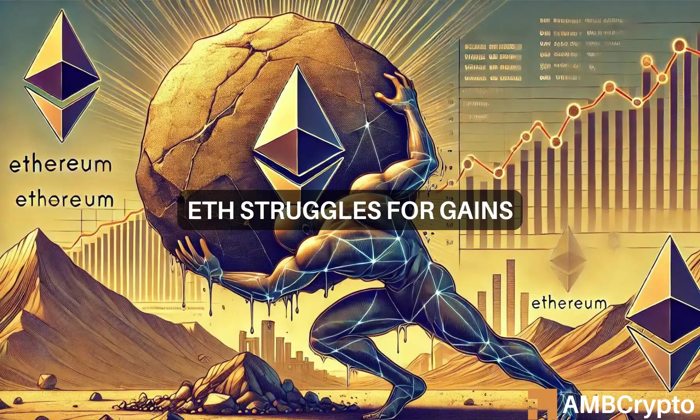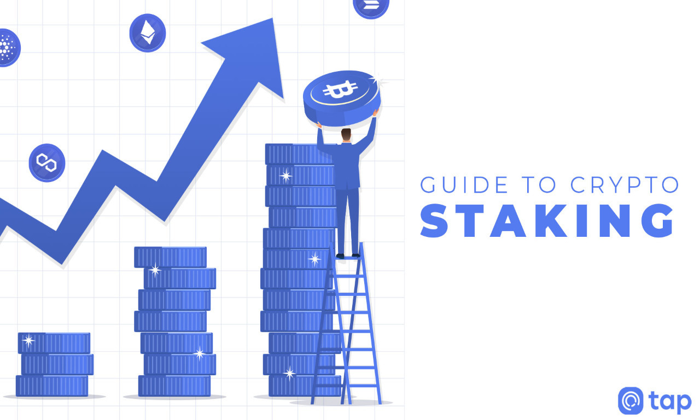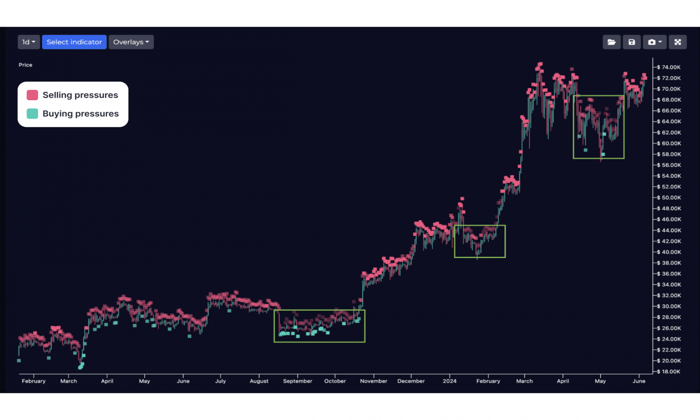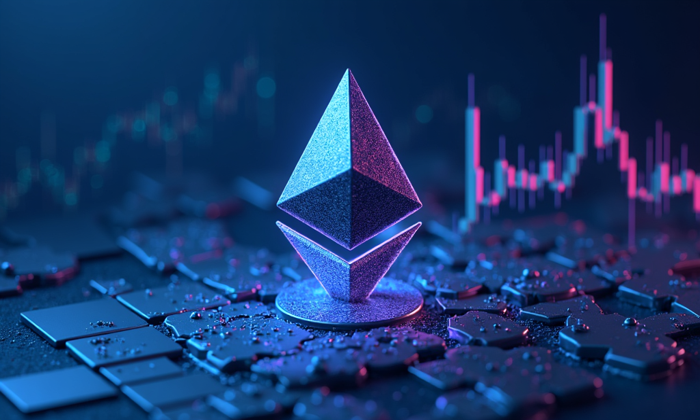In the ongoing debate of Bitcoin vs Gold, the contrasting trajectories of these two assets have captured the attention of investors worldwide. As gold prices approach an unprecedented $3,000 per ounce, Bitcoin’s performance appears significantly muted, raising questions about the future of the cryptocurrency market. The surge in gold is largely attributed to rising inflation effects and global economic uncertainty, compelling investors to flock to this traditional safe haven. Meanwhile, Bitcoin struggles to maintain its position, lagging behind investment trends that favor established commodities. This divergence not only highlights the resilience of gold but also poses critical implications for Bitcoin’s role in the investment landscape.
In the clash between digital currency and tangible assets, the comparison of Bitcoin and yellow metal reveals much about modern investment priorities. With gold reaching new heights in value, the performance of Bitcoin has remained stagnant, prompting discussions about the relative strengths of these investment vehicles. As traditional financial wisdom favors gold during uncertain times, the cryptocurrency’s appeal seems to wane amidst fluctuating market sentiments. Furthermore, the implications of inflation and shifting economic landscapes are reshaping investor behavior, making the contrast between these two assets even more pronounced. Understanding these dynamics is crucial for anyone navigating the current financial environment.
The Surge of Gold Prices in 2025
As of 2025, gold prices have reached unprecedented heights, nearing $3,000 per ounce. This surge can largely be attributed to increasing inflation levels across the globe, particularly in the United States. Investors often turn to gold during periods of economic uncertainty, viewing it as a safe haven asset. The current geopolitical climate, influenced by the policies of President Trump’s administration, has prompted many to seek the stability that gold offers. With market volatility and heightened inflationary pressures, gold has regained its status as a primary investment choice for those looking to preserve value.
Furthermore, the demand for gold has skyrocketed, supported by central banks that have increased their gold reserves. This shift in investment trends underscores a broader movement away from riskier assets during uncertain times. Analysts argue that gold’s performance not only reflects its intrinsic value but also highlights the growing fears of economic instability. As more investors flock to gold, its market capitalization has soared, solidifying its position as a dominant asset class in today’s financial landscape.
Bitcoin’s Struggles Amid Gold’s Ascent
Despite gold’s impressive performance, Bitcoin is experiencing a stark contrast. While gold prices are climbing, Bitcoin has struggled to maintain momentum, particularly as it hovers below the $100,000 mark. After initially surging post-election in 2024, Bitcoin has faced significant corrections, with its value now approximately 15% lower than its all-time high. This decline raises questions about the cryptocurrency’s place in the current market, especially as investors appear to be favoring gold in light of rising inflation and economic uncertainty.
The decline in Bitcoin’s demand is evidenced by metrics such as the Coinbase Premium, which indicates a lack of enthusiasm among U.S. investors. Furthermore, the performance of local Bitcoin ETFs has also been lackluster, suggesting that confidence in the cryptocurrency market may be waning. In an environment where gold is seen as a more stable investment, Bitcoin’s volatility could deter potential investors. This divergence in performance between Bitcoin and gold signals a potential shift in investment dynamics that may redefine the cryptocurrency landscape.
Bitcoin vs Gold: A Comparative Analysis
When comparing Bitcoin and gold, it’s essential to consider their roles as investment assets. Gold has been a trusted store of value for centuries, often seen as a hedge against inflation and economic instability. In contrast, Bitcoin, while touted as ‘digital gold’, has only been around for over a decade and is still establishing its reputation. The current surge in gold prices has shone a spotlight on Bitcoin’s inability to keep pace, raising questions about its viability as a long-term investment.
Additionally, the cryptocurrency market has shown itself to be highly volatile and unpredictable. While Bitcoin has the potential for significant gains, it also poses substantial risks. Gold’s steady ascent amidst inflationary pressures contrasts sharply with Bitcoin’s erratic price movements. As investors navigate the complexities of both assets, it becomes clear that gold offers a sense of security that Bitcoin has yet to fully establish. The question remains: will Bitcoin adapt and find its footing in an environment dominated by gold’s stability?
Inflation Effects on Gold and Bitcoin
Inflation plays a critical role in shaping the investment landscape for both gold and Bitcoin. As inflation rates rise, the purchasing power of fiat currencies declines, leading investors to seek refuge in assets that can potentially retain their value. Gold has historically been the go-to asset in such scenarios, with its prices often surging as inflationary pressures mount. In contrast, Bitcoin’s response to inflation has been more complex; while it is often viewed as a hedge against inflation, its price movements can be erratic, influenced by market sentiment and speculative trading.
The current inflationary environment has undoubtedly favored gold over Bitcoin. With gold nearing $3,000 per ounce, investors are clearly gravitating toward the stability it offers. Meanwhile, Bitcoin’s struggle to gain traction amidst these inflation concerns highlights the challenges it faces in establishing itself as a reliable store of value. As inflationary pressures persist, the divergence in the performance of these two assets could continue, prompting investors to reconsider their strategies in the evolving economic landscape.
Investment Trends: Shifting Focus from Bitcoin to Gold
Recent investment trends indicate a significant shift from Bitcoin to gold, driven largely by the current economic climate. With gold prices soaring and consistently breaking new records, investors are increasingly viewing the yellow metal as a safer bet amidst growing economic uncertainties. This pivot highlights a broader trend where traditional assets like gold reclaim their status as preferred investment vehicles, especially during periods of inflation and market volatility.
Conversely, Bitcoin, while still popular among certain investor demographics, has not managed to capture the same level of confidence. The cryptocurrency’s performance has been lackluster in recent weeks, and the fading demand reflects a cautious approach by investors. As financial markets respond to external economic pressures, the trend towards gold illustrates a critical reassessment of risk and reward, underscoring the importance of stability in uncertain times.
The Role of Central Banks in Gold’s Popularity
Central banks play a pivotal role in the increasing popularity of gold as an investment asset. In times of economic uncertainty, these institutions often turn to gold to bolster their reserves and ensure financial stability. The recent trend of central banks accumulating gold has not only driven prices up but has also reinforced gold’s status as a secure investment. This collective movement towards gold signifies a broader acknowledgment of its value as a hedge against inflation and currency devaluation.
The actions of central banks may also impact the cryptocurrency market, particularly Bitcoin. As institutional investors gravitate towards gold, Bitcoin faces the challenge of establishing its legitimacy as a comparable asset class. The reliance on gold by central banks underscores the metal’s enduring appeal, while Bitcoin’s lack of institutional support in this regard raises questions about its long-term viability. This dynamic is crucial as investors navigate their options in a rapidly changing financial landscape.
Geopolitical Factors Influencing Gold and Bitcoin
Geopolitical factors have a profound impact on both gold and Bitcoin, often dictating their performance in the market. Events such as elections, international conflicts, and economic policy changes can create volatility that influences investor behavior. In 2025, the controversial actions of President Trump have sparked global uncertainty, leading many investors to flock to gold as a safe haven asset. This trend reflects a historical pattern where geopolitical instability drives demand for gold, further pushing its prices upward.
On the other hand, Bitcoin’s reaction to geopolitical events is less predictable. While some investors view Bitcoin as a hedge against traditional financial systems, its speculative nature often leads to erratic price movements in response to external events. The divergence between how gold and Bitcoin respond to geopolitical factors highlights the complexity of the investment landscape. As investors weigh their options, understanding these dynamics is essential for making informed decisions.
Market Sentiment and Its Impact on Bitcoin and Gold
Market sentiment plays a crucial role in the valuation of both gold and Bitcoin. Positive sentiment surrounding gold, fueled by its recent price increases, encourages more investors to enter the market, reinforcing its upward trajectory. In contrast, Bitcoin has struggled to maintain positive sentiment in the face of declining demand and skepticism about its future performance. The psychology of investors can significantly influence market trends, making sentiment analysis an essential tool for predicting asset movements.
As gold continues to attract positive sentiment, Bitcoin may need to reevaluate its strategies to regain investor confidence. The contrasting narratives surrounding these two assets highlight the importance of understanding market dynamics. While gold thrives on stability and historical precedent, Bitcoin’s narrative is still being written, making it susceptible to shifts in sentiment. The interplay between these factors will be critical as both assets navigate the evolving financial landscape.
Future Outlook: Gold and Bitcoin in a Changing Economy
Looking ahead, the future of gold and Bitcoin will be shaped by ongoing economic changes, particularly in light of inflation and geopolitical developments. Gold is likely to maintain its appeal as a secure investment option, especially if inflation continues to rise. Analysts predict that gold could see further price increases, potentially breaking new records as investors continue to seek stability in uncertain times. This outlook positions gold as a dominant force in the investment landscape.
In contrast, Bitcoin’s future remains more uncertain. While it has the potential for significant gains, it also faces substantial challenges in establishing itself as a reliable investment. The cryptocurrency market is highly volatile, and its correlation with traditional assets like gold could lead to further divergence in performance. As investors navigate these complexities, the evolving economic environment will play a crucial role in determining the trajectory of both gold and Bitcoin in the months and years to come.
Frequently Asked Questions
How does Bitcoin performance compare to gold prices in 2025?
In 2025, Bitcoin performance has significantly lagged behind gold prices, which recently reached new all-time highs close to $3,000 per ounce. While gold has shown a robust upward trend due to factors like rising inflation and economic uncertainty, Bitcoin has struggled to maintain its value, remaining below $100,000 for most of February.
What factors are driving the rise in gold prices as Bitcoin struggles?
Gold prices are surging due to rising inflation effects and global economic uncertainties, prompting investors to flock to gold as a safe-haven asset. In contrast, Bitcoin has seen decreased demand, particularly in the U.S., which has contributed to its stagnant performance despite its previous gains.
Are investment trends shifting from Bitcoin to gold in 2025?
Yes, investment trends appear to be shifting from Bitcoin to gold in 2025, as evidenced by gold’s record prices and increased interest from central banks and investors. The contrasting performance between gold and Bitcoin indicates a greater reliance on gold amidst economic instability.
What are the implications of Bitcoin’s performance in relation to gold prices?
The implications are significant; as gold continues to reach new heights, Bitcoin’s inability to keep pace may lead to a reevaluation of its status as a digital gold. Investors may prioritize gold for its stability during inflationary periods while questioning the long-term viability of Bitcoin as a safe-haven asset.
Can Bitcoin recover despite gold’s strong performance?
While Bitcoin has struggled recently, its historical volatility suggests it could recover despite gold’s strong performance. The cryptocurrency market is unpredictable, and past trends show that Bitcoin often reacts contrary to market expectations, potentially leading to future peaks regardless of gold’s trajectory.
Why are gold prices rising while Bitcoin is underperforming?
Gold prices are rising due to heightened inflation effects and global economic instability, making it an attractive investment. Conversely, Bitcoin is underperforming due to fading demand and lackluster performance in local markets, which contrasts sharply with gold’s bullish trend.
How do inflation effects influence the investment choices between Bitcoin and gold?
Inflation effects play a crucial role in investment choices, as many investors view gold as a hedge against inflation, leading to increased demand and higher prices. In contrast, Bitcoin’s appeal as an inflation hedge has diminished in recent weeks, influencing investors to favor gold.
What can we expect for Bitcoin’s future performance in a gold-dominated market?
While the current market favors gold, Bitcoin’s future performance remains uncertain. Historical patterns suggest that Bitcoin can rebound unexpectedly, and shifts in investor sentiment may lead to renewed interest, despite gold dominating the market for the time being.
| Aspect | Gold | Bitcoin (BTC) |
|---|---|---|
| Current Price Status | Approaching $3,000/oz | Stuck below $100,000 |
| Market Capitalization | Nearly $20 trillion | Significantly lower than gold’s market cap |
| Current Economic Influence | Rising inflation and global uncertainty driving demand | Decreased demand in recent weeks, especially in the US |
| Price Trends | Consistent upward trajectory with new all-time highs | Recent corrections after reaching highs, showing volatility |
| Investor Behavior | Considered a safe haven asset | Market sentiment fluctuates, unpredictable future |
Summary
In the debate of Bitcoin vs Gold, the current market dynamics indicate that while gold is experiencing a significant rise, approaching $3,000/oz amid economic uncertainty, Bitcoin is struggling to maintain its value below $100,000. The stark contrast in their price trajectories raises questions about Bitcoin’s future, especially given the fading demand and market sentiment. However, the unpredictable nature of cryptocurrencies suggests that Bitcoin may still surprise investors in the coming months, potentially reversing its current downtrend regardless of gold’s performance.
In the ongoing debate of Bitcoin vs Gold, two of the most talked-about assets in today’s financial landscape, the contrasting performance of these investment vehicles has captured the attention of investors and analysts alike. While gold prices soar towards an all-time high, nearing the coveted $3,000 mark, Bitcoin struggles to maintain its footing below $100,000. This divergence raises questions about the future of Bitcoin performance amidst rising inflation effects and shifting investment trends. As the cryptocurrency market experiences fluctuations, many wonder if Bitcoin can reclaim its former glory or if it will remain overshadowed by the enduring allure of gold. With both assets vying for the title of a stable investment, understanding their dynamics is crucial for making informed financial decisions.
When examining the fierce rivalry between digital currency and traditional precious metals, it’s essential to consider alternative perspectives. The comparison of virtual assets such as Bitcoin with classic financial safe havens like gold highlights the evolving nature of investments in today’s economy. As inflation drives investors toward tangible assets, the recent surge in gold values juxtaposes the stagnant performance of cryptocurrencies, prompting discussions on their respective roles in a diversified portfolio. The stark contrast in market reactions to economic shifts illustrates the changing landscape of financial opportunities, where Bitcoin’s potential as a digital store of value is increasingly scrutinized against the backdrop of rising gold prices. This analysis not only reflects investment trends but also underscores the importance of understanding the forces at play in both markets.


